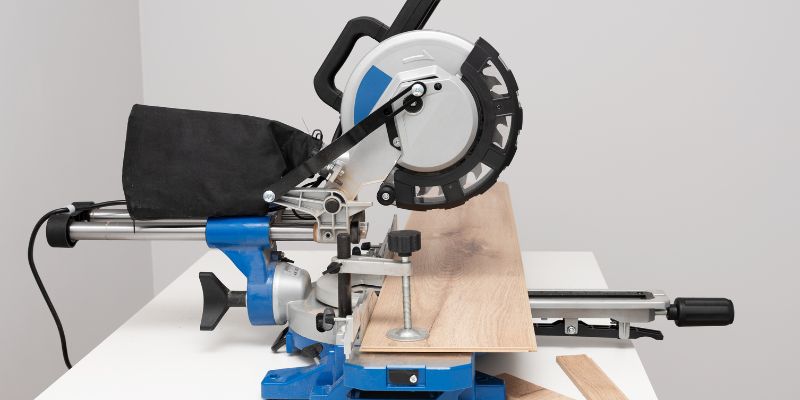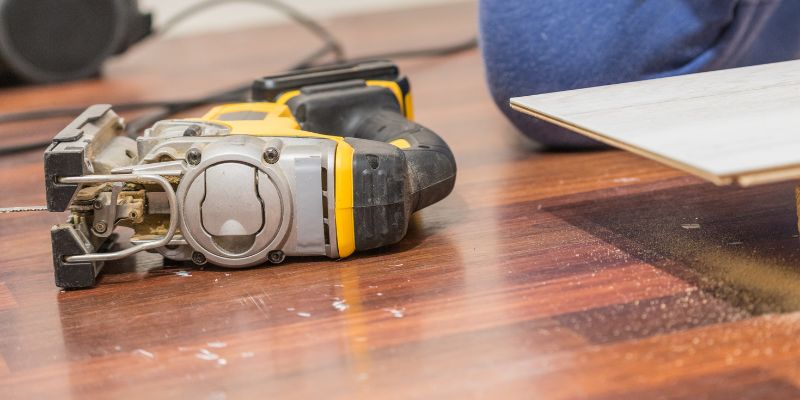To cut panels, measure and mark the desired length, use a straightedge as a guide and cut along the marked line with a circular saw or a jigsaw. Panels can be cut to size by following these simple steps.
Measurement and marking are crucial for accuracy, while a straightedge ensures a clean and straight cut. Then, use a circular saw or a jigsaw to make the cut along the marked line.
Choosing The Right Tools
When it comes to cutting panels, selecting the proper tools is essential to ensure accuracy and efficiency. The right combination of tools can make all the difference in achieving clean, precise cuts. In this article, we will discuss two key factors to consider when choosing your tools: selecting the proper saw and using the right blade.
Selecting The Proper Saw
Before diving into the cutting process, it’s crucial to choose the right saw for the job. There are various saw options available, each designed for specific purposes. Let’s take a closer look at a few popular saw types and their advantages:
| Saw Type | Advantages |
|---|---|
| Circular Saw | Portable, versatile, and suitable for straight cuts on various materials. |
| Jigsaw | Offers maneuverability and the ability to make curved cuts and intricate shapes. |
| Table Saw | Provides stability and precise cuts for larger panels with a straight edge. |
Consider the specific requirements of your project and select a saw that aligns with those needs. Remember to take into account factors such as portability, cutting depth, and versatility. Choosing the proper saw will greatly impact the quality of your panel cuts.
Using The Right Blade
Once you have selected your saw, the next step is to ensure you are using the right blade. Different materials require different types of blades to achieve optimal results. Here are some examples of blades suitable for cutting specific materials:
- A fine-toothed blade for cutting laminate panels
- A carbide-tipped blade for cutting plywood
- A diamond blade for cutting ceramic panels
The key is to match the blade’s characteristics with the material you are working with. This will help minimize splintering, prevent blade dulling, and promote cleaner, smoother cuts.
By selecting the proper saw and using the right blade, you are well on your way to efficiently and effectively cutting panels. Remember to always prioritize safety and take the time to familiarize yourself with the tools and materials before proceeding. With the right tools in hand, you can confidently tackle your panel-cutting projects with precision and ease.

Preparing The Workspace
When it comes to cutting panels, it’s crucial to have a well-prepared workspace to ensure accurate and efficient work. Preparing the workspace involves measuring and marking the panel as well as securing it properly. Let’s take a closer look at these important steps.
Measuring And Marking The Panel
Before you begin cutting the panel, it’s essential to measure and mark it correctly. This step helps ensure precision and prevents unnecessary mistakes. Here’s how you can do it:
- Mentally visualize the desired dimensions of the panel and determine the appropriate measurements based on your project requirements.
- Using a measuring tape or ruler, measure the panel along the edges and mark the desired dimension with a pencil or marker. It’s important to make straight and clear marks that are easily visible.
- If there are multiple cuts to be made, mark each measurement accordingly, ensuring clarity and accuracy.
- Double-check your measurements to avoid any errors before proceeding to the cutting process.
By following these steps in measuring and marking the panel, you’ll have a clear roadmap for the cutting process and minimize the chances of errors.
Securing The Panel
Securing the panel properly is essential to ensure safety and accuracy during the cutting process. Here’s how you can secure the panel:
- Place the panel on a stable and flat surface, such as a workbench or table. Ensure that the surface is clean and free from any obstacles that may affect the stability of the panel.
- Use clamps to secure the panel firmly to the work surface. Position the clamps on both ends of the panel, making sure they apply equal pressure to prevent any movement or shifting.
- If necessary, use additional clamps along the sides of the panel to provide extra support and stability.
Securing the panel properly not only prevents accidents but also allows you to have better control during the cutting process, resulting in clean and accurate cuts.
Mastering Cutting Techniques
Learn the best techniques for cutting panels with precision. Discover step-by-step instructions and tips to master cutting even the most challenging materials effectively. Whether you are a beginner or experienced, this guide provides valuable insights for achieving clean and accurate cuts in panel projects.
When it comes to woodworking, mastering cutting techniques is an essential skill. Whether you’re a seasoned pro or just starting, understanding the basics of straight and angled cuts can elevate your woodworking game. Here’s a comprehensive guide on how to master cutting techniques for panel work.
Straight Cuts
Straight cuts are fundamental in panel work, ensuring precision and accuracy in your projects. To achieve clean and smooth straight cuts, follow these simple steps:
1. Measure Twice: Before making a cut, measure the panel accurately. Use a straight edge or ruler to mark the cutting line.
2. Secure the Panel: Clamp the panel securely to prevent any movement during cutting.
3. Use a Guide: For longer cuts, a straight edge or cutting guide can provide a consistent and straight-cutting path.
4. Choose the Right Blade: Select a sharp blade appropriate for the material being cut.
5. Cut with Confidence: Hold the saw firmly and make the cut in a single steady motion, keeping the blade aligned with the cutting line.
Angled Cuts
Angled cuts add versatility and intricacy to woodworking projects. Whether it’s mitered corners or beveled edges, mastering angled cuts can take your panel work to the next level. Here’s how to achieve precision with angled cuts:
1. Adjust the Saw: Set the cutting angle on your saw according to your project requirements.
2. Secure the Panel: Just like with straight cuts, it’s crucial to secure the panel to prevent any movement during cutting.
3. Test Cuts: Before making the final cut on your panel, practice on scrap material to ensure the accuracy of the angle.
4. Use a Miter Box or Guide: These tools can assist in achieving precise angled cuts, especially for mitered corners.
5. Maintain a Steady Pace: Slow and consistent movements when cutting angled lines can deliver cleaner results.
Mastering cutting techniques is essential for creating professional-grade woodworking projects. By understanding and practicing these fundamental skills, you can elevate the quality and precision of your panel work, resulting in impressive and refined outcomes for your woodworking endeavors.
Ensuring Safety Measures
To ensure safety while cutting panels, it is important to follow these measures: wear protective eyewear, gloves, and a mask to avoid injury from flying debris; use a sharp cutting tool and keep your hands steady; secure the panel properly to prevent slipping; and always work in a well-ventilated area to minimize exposure to dust and fumes.
Wearing Protective Gear
When it comes to cutting panels, one of the most crucial safety measures to follow is wearing protective gear. By wearing the right equipment, you can safeguard yourself from potential accidents and injuries. Make sure to wear goggles or safety glasses to protect your eyes from flying debris. Additionally, wear earplugs or earmuffs to prevent damage from loud noises. It is also essential to put on a dust mask or a respirator to shield your lungs from harmful dust particles. Don’t forget to wear work gloves to provide added protection for your hands. Your safety should always be a top priority, and wearing the proper protective gear is a vital step in achieving that.
Maintaining Concentration
To further enhance your safety when cutting panels, maintaining concentration is key. Cutting panels requires focused attention to avoid making mistakes or causing accidents. Find a quiet and distraction-free environment where you can work without any interruptions. Concentrate on the task at hand, ensuring that you are fully aware of your movements and surroundings. Avoid rushing the process and take your time to cut panels accurately and securely. Whether you are using a handheld power tool or a manual cutting tool, staying focused will help you maintain control and minimize the risk of accidents.
Remember, safety should always be your primary concern when cutting panels. By wearing protective gear and maintaining concentration throughout the process, you can prevent potential injuries and create a safe working environment. So, gear up and stay focused to ensure a secure and successful panel-cutting experience.

Troubleshooting Common Issues
While cutting panels, it’s common to encounter a few hiccups along the way. Here are some tips to help you troubleshoot and overcome the most common issues that may arise during this process.
Avoiding Splintering
To ensure clean and splinter-free cuts, follow these guidelines:
- Choose the Right Blade: Opt for a high-quality blade with fine teeth and a clean cutting edge. This will minimize the chance of splintering.
- Secure the Panel: Properly secure the panel to prevent any movement or vibrations that can lead to splintering. Use clamp or hold-down devices to keep the panel in place.
- Use Backing Boards: Placing a backing board beneath the panel can provide additional support and prevent tear-out on the underside of the cut.
- Start with a Score: Before making a full cut, create a score line using a utility knife or a straight edge. This pre-cut helps to guide the saw and minimize splintering.
- Control the Feed Rate: Maintain a steady and controlled feed rate while cutting. Avoid pushing the saw too forcefully, as it can increase the risk of splintering.
Dealing With Warped Panels
Warped panels can make cutting more challenging, but these tips will help you tackle the issue:
- Identify the Warped Areas: Carefully inspect the panel and mark the areas where the warping is most prominent. This will help you plan your cuts accordingly.
- Allow for Relaxation Time: If the panel has been stored horizontally, allow it to rest vertically for some time. This can help alleviate the warp before cutting.
- Use Stabilizing Devices: Consider using stabilizing devices, such as clamps or weights, to hold the panel in a flat position while cutting. This can help minimize the impact of the warp during the cutting process.
- Make Relief Cuts: For severely warped panels, making relief cuts along the edges can help release tension and allow for smoother and more precise cuts.
- Consider Straight-Lining: If the warp is extreme, it may be necessary to straight-line the panel before cutting. This involves removing the warped edges to create a straight reference edge.
Frequently Asked Questions Of How To Cut Panels
What Is The Best Way To Cut Paneling?
The best way to cut paneling is by using a fine-tooth saw or a circular saw with a plywood cutting blade. Make sure to measure and mark the dimensions accurately before cutting. The fine-tooth saw will provide clean and precise cuts, while the circular saw will make cutting faster and easier.
How Do You Cut Panels?
To cut panels, measure and mark the desired dimensions, then use a circular saw for straight cuts or a jigsaw for curves. Always wear safety goggles and use clamps to secure the panel. Take your time and make precise cuts for the best results.
Can Wall Panels Be Cut?
Yes, wall panels can be cut to fit specific dimensions or to create custom shapes. Cutting can be done using appropriate tools like a saw or a utility knife.
What Saw Is Best For Cutting Shower Panels?
The best saw for cutting shower panels is a circular saw. It provides precise and clean cuts, making it ideal for cutting through the material with ease.
Conclusion
Cutting panels requires precision and the right tools. By following our tips, you can ensure a smooth and accurate panel-cutting process. Remember to measure carefully, use a guide, and take safety precautions. With practice and patience, you can become proficient at panel cutting and complete your projects with ease.
Start cutting with confidence today!


